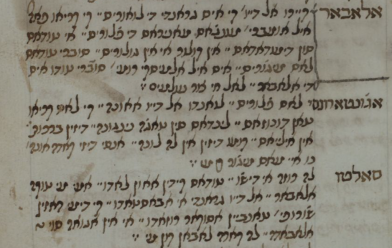CES
31. El lindo mancebo + Los amantes de la casa rica Oh! que lindo mancevo (CES)
A combination of stanzas, of which the first three are rather rare and to date documented only in Salonican sources (Attias 1972, no. 43; Bassan 1947, no. 84). In contrast, stanzas 4-6 are widespread in the modern recorded repertoire and are usually sung together with other stanzas entitled Los amantes de la casa rica (Attias 1972, no. 97; Hemsi 1995, no. 100). Attias’ version starts with the second stanza, “Oh que lindo mancebo,” a stanza that is repeated by the CES at the end of this recording. Attias’ recorded versions, sung by him and his wife, Alegra Attias-Alhanati (e.g. NSA, Y 09485, no. 1), have the same melody as this recording and include only the first three stanzas. This melody differs substantially from the one found on many twentieth century commercial recordings, although the contour of the four phrases points to a certain affinity between them. Attias cites his mother’s testimony that the song refers to an actual love affair between a poor girl and a young man from a wealthy family that took place at the beginning of the twentieth century.
Te huetes a Stambo
me dejates ansína.
Ninguna niña venga
n’esta mofina mía.Oh que lindo mancebo
que tu ya te hicites.
A mí como el sebo
ya me derretites.Caminando llorando
aman que temeroso.
Cayera y muriera
mi caro esposo.Pájaro d’hermosura
y rico de figura
aposa en mis ventanas
para oír la boz.Salgo triste llorando
al pájaro llamando.
Me dejó asperando
sin tener piadad.Llora querida llora
que’stas en mares fondas.
Tienes gente cruela
no se dejan convensar.Oh que lindo mancebo
que tu ya te hicites.
A mí como el sebo
ya me derretites.






